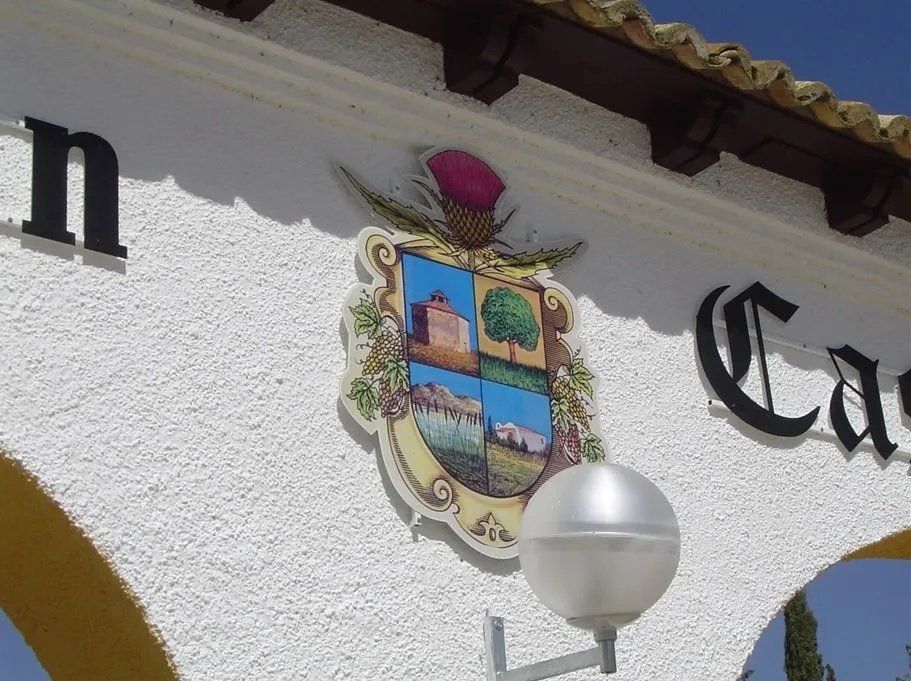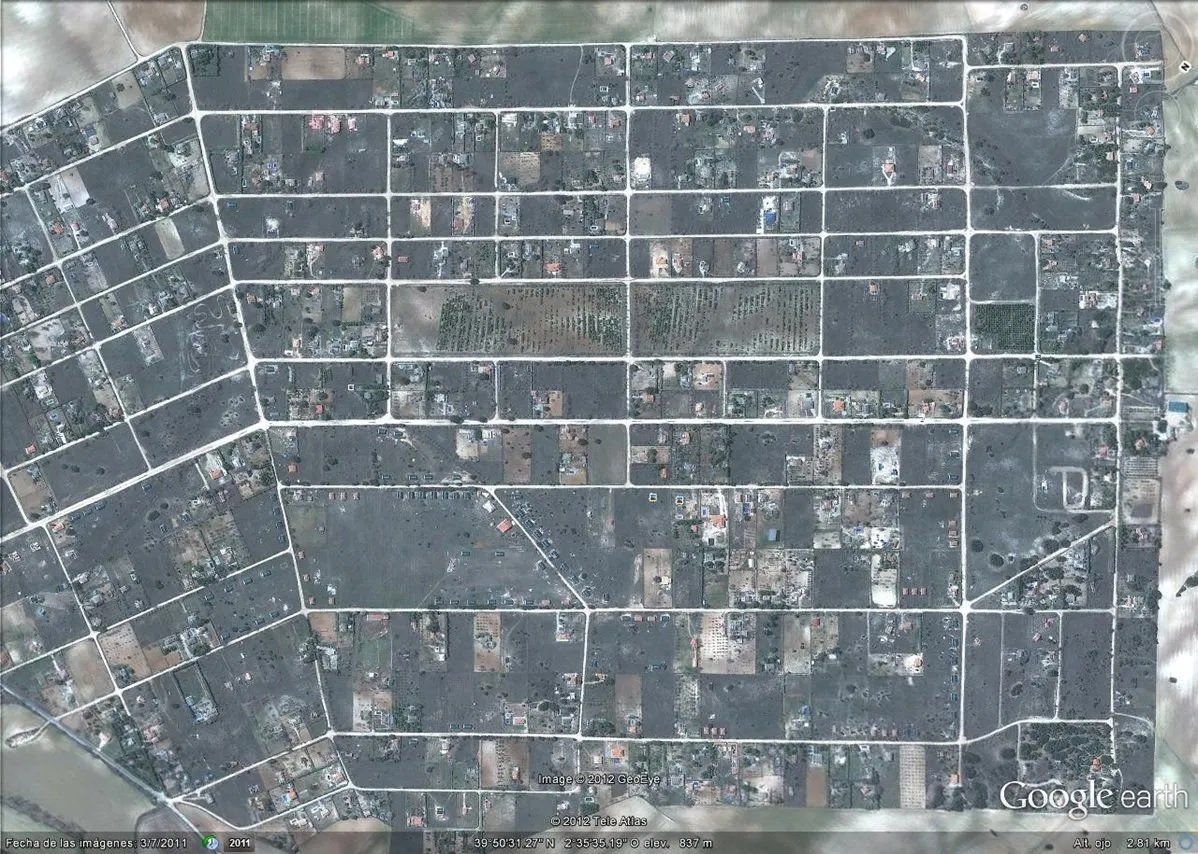History of Casalonga
Here, we are going to put a writing from a neighbor of Casalonga, Rafaela Juidia, who describes with great preciousness and delicacy, the birth of Casalonga:
"Once upon a time there was a poplar, which grew happily for many, many years, until it became a centennial, with a height of 30 meters, its immense trunk supported its bushy and leafy horizontal branches, in summer the shade could measure 100 meters in diameter in the middle of the sunny day. Along with a farmhouse in the lands of Castilla la Mancha and throughout his long life, he took care of giving shade and shelter to all kinds of birds and animals in that environment. The different people who would go through that house throughout their 100 years would sit in also. How many things could he have told if he had been able to speak, both of his young years that would be happy, and of the last years of his life that should not have been so much? .The house was large, with a large area of land in which the holm oaks and scrubland abounded, which is why it was also a hunting ground. Rabbits, hares, partridges and other animals in the area lived together with farmers in that quiet place. As the site had its attraction next to a river on whose margin an immense poplar grove was seen that delineated its course until it reached an artificial lake and some lagoons created by the extraction of sand, turning it all into a beautiful wetland It has its charm for some waterfowl and carp fishermen. Some of its owners had the idea to dismantle everything, make an urbanization and sell it for parcels of 3,000 meters. Next to the house they made a great restaurant where large barbecues were prepared, A great dance floor with an orchestra for Saturday nights and holidays. With that big tree at the door and all the people who were arriving, there was no doubt that the option was right. Surrounded by large gardens full of rose bushes and fruit trees, apple and cherry trees, the Tree became famous for all the neighbors who came, also for the neighboring towns. It had a special charm at any time of day woe to the night, it was always good under the Big Tree. Under that Tree great events were celebrated, weddings of up to 300 guests, baptisms, the big feast of the Virgen de la Cabeza on August 15, lunches and dinners of friends on weekends throughout the year, and especially in summer it was the meeting point for everyone. See you on the Tree! the neighbors said.For more than 20 years, the young and not so young, enjoyed card games or their gatherings, the smallest running around with their hubbub without realizing that the Big Tree was dying, nobody realized that the tree was dying without being able to complain, without being able to say that it could no longer bear that movement of people just above its roots. It was never known what the exact cause was. Graphiosis is believed to be a serious disease that attacks elms. It was useless for experts on the subject to pass, to be treated with fungicides, in a few months he was dry and lifeless.Maybe it had to happen that way, it is difficult for a poplar to live 100 years and this succeeded. only its dry trunk and its phantasmagorical branches remain, camouflaged by an ivy that tries to cling to it, in order to give some life to the one who had so much until the urban dwellers discovered it to witness its end. "
After this beautiful writing, we will give you other details about Casalonga:
The Casalonga Urbanization is located in the municipality of Villar de Cañas. It is accessed through exit 124 of the A-III motorway.
At the entrance is the coat of arms of Casalonga, crowned by the thistle flower, on the sides clusters of grapes and inside a dovecote, the lake, the hermitage, and an enormous elm, whose history we already tell you and dates from the origin of Casalonga .
It is located on a slope and the Záncara river (a tributary of the Guadiana) runs through its lower part. It has several lakes where you can enjoy bathing in summer.
In this aerial photo you can see the Casalonga urbanization on the left, in the center the highway that comes from the A-III to Villar de Cañas, the Záncara river and three lakes. On the right two solar fields. At the top the village El Congosto.
The urbanization was built in 1973 and was the largest in Spain in area. It has a length of 3 km and a width of 1.5 km.
Here we have an aerial image of the Casalonga lakes on the banks of the Zancara river, right at the gates of our urbanization.The Casalonga lakes, our lakes, are the banner of Casalonga.
Do you want to know more about the history of Casalonga? Rafaela Juidia continues telling us with her writings:
"WEEKEND IN THE FIELD It could be any Friday, but that day when dawn dawned something special was noticed at home. Parents at work, children at school, all of them happy, because at the end of the day the weekend began. country week, leaving for two days the stress of the big city. The children counted the kilometers that were missing to reach the 124. Right there, it is where they left the Valencia highway to enter a difficult and bumpy road. It mattered, it was only 3 kilometers to get to that place that seemed to everyone an oasis. The car swings through potholes, it was not an impediment to start enjoying seeing the row of poplars, which started to the right of the Záncara river and arrived just to the Lake. To the left of the river, passing a small bridge is the Congosto. A very ancient small Villa or village, where in the 70s 5 or 6 families still lived. Just opposite the Congosto, on the right cha of the way, and surrounded by sunflowers, we have the ruins of the small cemetery of this small Villa. Above the old cemetery, there is a dovecote, used as a haystack in the years of which we speak. We arrived at the entrance of the Urbanization where there is a restaurant - at that time open to the public - and, right next to it, is still the old house tillage. Where was the only phone to communicate with our relatives in case of an emergency. At the door of the bar, there was that centennial tree that attracted so much attention, and to which everyone in the place called the Elm. Crossing the road to the river, was the bathing area. I mean, the first lake we see. Followed by this, there were two gravel pits, which years later, when their activity was abandoned, became the lakes we know today. All three converted over time into a beautiful wetland (where bathing is prohibited). Bathing in it is very dangerous due to the sediments that have accumulated in its bottom. This has given way to the vegetation of reeds and tarays, which we know today, where a large number of ducks and carps nest. To see them, you have to look for the first hours of the day, or the sunset in the afternoon, and some good binoculars. When bathing was allowed, families came from the nearby towns to spend the day on weekends. In the first years some people died from drowning.The Urbanization in those years, had almost no trees, there was only one oak, which are the ones we see distributed and preserved by some on their plot. Everything was a dryland that the clearing had left, to form the roads and plots. In the summers the dust was chewed and in winter the roads became impassable, but that was true. As there were very few fences, we could find partridge nests next to our houses, both the doors of the plots and those of the houses were always open. And the children ran happily among the fields planted with cereal or sunflowers depending on the time of year. The same they did a tent under some of the oaks, or they ran races with the bike, with the only danger of coming with their skinned knees. Everything was enjoyed with the intensity that young years give. But at the same time, with the disadvantage and discomfort that life in the country had at that time. Not that it was better or worse, we only had youth and a desire for nature. "








